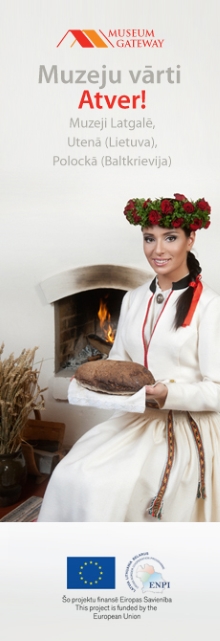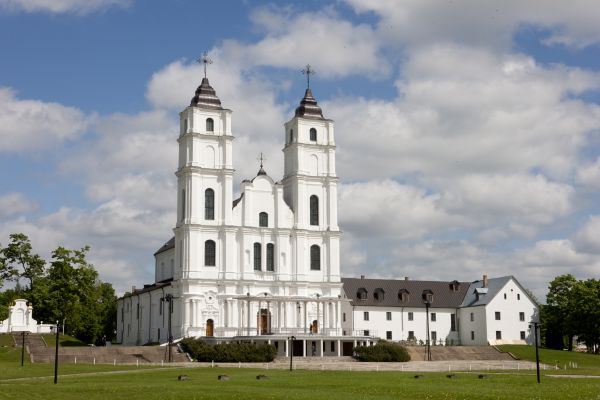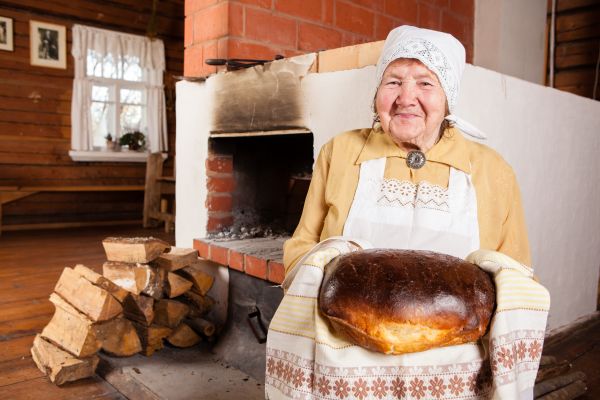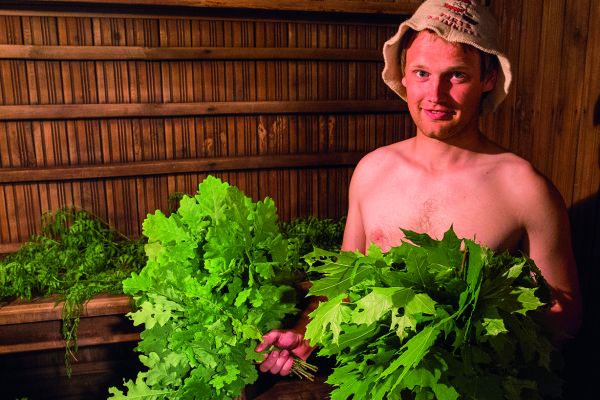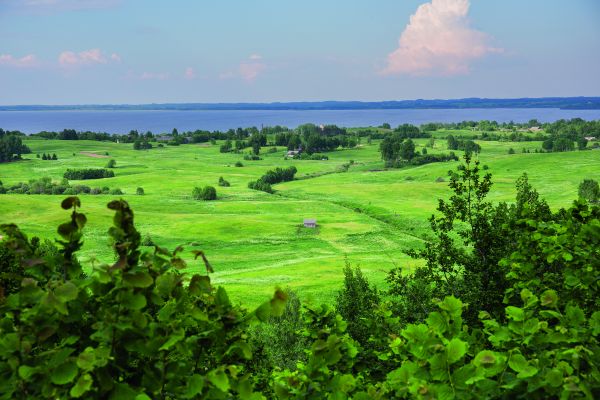•
•
| Sort by by name | Advanced search |

Indrica, Kalnieši parish, Krāslava Municipality, Krāslavas nov., LV-5660
Mob.phone: +371 26263061
Unique wooden architectural monument (1655–1658). It is the oldest wooden church in Latgale. Indrica catholic church was built even before reformation. In 1695 landlord Jānis Andrejs Plāters accepted Christianity and in 1698 the church was rebuilt and handed over to Catolics. In the choir room there is an old-fashioned organ with peculiar woodcarvings. There are four altars with woodcarvings and ancient paintings.
For visiting church please book in advance!

Kombuļi, Krāslava Municipality, Krāslavas nov., LV-5656
Mob.phone: +371 29378955
When in 1767 a new stone church was built in Krāslava, the old had been demolished and transferred to Kombuli. This church in Kombuli existed for about 60 years. In 1818 the old wooden church was demolished and a stone chapel was built, it was dedicated to St. Janis honour. It was Krāslava church branch. The improvement and reconstruction works of the church continued until the 40s in the 20th century.
For visiting church please book in advance!

Rīgas Street 135, Krāslava, Krāslavas nov., LV-5601
Mob.phone: +371 22323536
Russian Old-Believers have been living on the territory of Latgale for more than three hundred years. According to the information received, one of the Old-Believers’ church was on the Daugava’s bank in Rātuža Street. The Parish was officially registered in 1850. A local merchant gave up his outbuildings to rebuild and make an Old-Believers church approximately in 1859. It was sanctified to the honour under the shelter of God-Mother. The Church caught fire on December 7, 2002, it damaged the building and some valuable icons. The construction of a new Old- Believers church was begun on the place of the burnt down old chapel. The sanctification of the building was on October 26, 2008.

Priedaine, Dārza Street 30, Krāslava, Krāslavas nov.
Mob.phone: +371 29498216
This is the newest church in the county. In 2007 it was consecrated in the honour of European guardians St. Brigita and St. Katrina. Mother's of God grotto and the statue are placed in the garden of Priedaine Church.
For visiting church please book in advance!

Izvalta, Izvalta parish, Krāslava Municipality, Krāslavas nov., LV-5652
Mob.phone: +371 28856787
The first wooden church in Izvalta was built in 1625. In the 18th century it was rebuilt and the bishop of Livonia Antons Ostrovskis sanctified it in honour to St. Michael archangel. In 1896 the present church of Izvalta was built.
For visiting church please book in advance!

Brīvības iela 30, Krāslava, Krāslavas nov., LV-5601
Mob.phone: +371 26783660
Built in 1789 as a catholic chapel of St. Vincent hospital. In 1856 a piece of land was bought from count Platers in order to begin construction of a new church. The old St. Yuri church was torn down and a cross was put in the place of the demolished altar. Construction of the new church was finished in 08.09.1859 and it was consecrated in honor of Our Lady’s patronage. It was meant originally for both Orthodox and Old-believers. In 1867 it was consecrated as an Orthodox church.
For visiting church please book in advance!

Baznīcas Street 2a, Krāslava, Krāslavas nov., LV-5601
Phone: +371 65623939, +371 65622201
The church is one of the most characteristic samples of Baroque style in Latgale. The first church was built in 1580-1590 by Miķelis de Brunavs, and it was wooden. The current stone church was constructed from 1755 to 1767, built according to the sketches of the Italian architect Antonio Parako. The altarpiece “St. Ludvik Leaves for Crusade” represents the artistic culmination of the interior. It is one of the most valuable art findings of the last years. The masterpiece gives a wonderful lighting effect. There are two portraits of the 2nd half of the 18th century made by the Italian painter Filipo Castaldi: one is the portrait of Count Konstantīns Ludvigs Plāters and the second - Countess Augusta Plāters (born as Oginska), who were the founders of the church. The church features a Baroque pulpit, seven confessionals (middle of the 18th century and later), paintings in the side altars, among the most notable the following must be mentioned – St. Jāzeps, St. Antonijs, St. Vincents, St. Juris, St. Stanislavs and others.
Talking about Krāslava Catholic Church and its significance for the region, one should pay attention to the martyr St. Donat’s relics that attract numerous Pilgrims making Krāslava town the second most significant pilgrimage place in Latgale after Aglona Catholic basilica. In 1790 thanks to the meditation of Pope Pia VI the holiday of St. Donat with the remission of people’s sins was proclaimed that it is celebrated on the first Sunday after St.Peter’s Day. Under the auspices of the church, there has been the first higher education institution in Latvia - Krāslava theological seminary.
In 2015 in the church were finished ambitious restoration works. The restoration of impressive painting – altar fresco titled “St. Ludwig Leaves for Crusade” took 12 years, the author of the work was Filippo Castaldi, painting is dated to 18th century 60-ties.

Pils 6, Krāslava, Krāslavas nov., LV-5601
Phone: +371 65623586, +371 65622201
18th century architectual monument of national importance. Built from 1750 to 1791. At the beginning of 19th century it was rebuilt in accordance with the canons of Classicism. It is the only castle in Latgale with such decor (architect A. Parako). Krāslava palace is the only palace in Latgale with such a decor. The manager's house, stables and servants' house were built next to the palace.

Rīgas Street (next to House No. 52), Krāslava, Krāslavas nov.
Mob.phone: +371 65623586
Opened on November 11, 2003. It is dedicated to the memory of all victims of Kraslava municipality during the terror of occupational regime. The sculptors are Indulis and Ivo Folkmaņi from Daugavpils. The monument is erected thanks to the initiative of Kraslava department of politically repressed and with the support of the Latvian fund.

Ūdrīšu parish, Krāslavas nov., LV-5601
Phone: +371 656 22201
People can observe geological formations, more than 300 milj years old sandstones and white clay.

Auleja parish, Krāslava Municipality, Krāslavas nov., LV-5681
Mob.phone: +371 26629078, +371 29378955
Aulejas Church is one of the oldest wooden churches in Latgale. It is built in 1530. The old church was very ruined during the war, therefore Jesuits built new wooden Church in 1626., which burnt in 1685. Our days church was built in 1709.

Indra parish, Krāslava Municipality, Krāslavas nov.
Mob.phone: +371 26263061
In former times Balbinova (Indra) had been in Piedruja congregation. In 1801 Nitoslavsku family asked Tsar Alexander I the permission to build their wooden chapel on the family cemetery. In 1803 chapel was built. In 1940 the new church building was almost completed, it was consecrated by Bishop Jazeps Rancans. Improvement works continued also after the consecration.

Ūdrišu parish, Borovka, Krāslava Municipality, Krāslavas nov.
Phone: +371 28856787
Borovkas church was built in 1811 by Vaclovs and Kasimir Plateri. Borovka was Kraslavas congregation branch. Book your visit in advince!

Augusta Street (behind number 28), Krāslava, Krāslavas nov., LV-5601
Phone: +371 65622201. Mob.phone: +371 29376090
A picturesque place that has a connection with a romantic legend about a big and devoted love between Count Plāter’s daughter Emīlija and a Polish officer Jozefs Karnickis. A fascinating event which had a tragic end happened in 1838 in Krāslava. The young people fell in love with each other. Count Plāters was against that love. Emīlija and Jozefs decided to kill themselves on one day: Jozefs had to shoot himself on one of Krāslava’s hills, but Emīlija had to jump out of the window of the third floor of Krāslava castle. After seeing the sign Jozefs shot himself, but Emīlija was saved by a servant at the last moment. Jozefs was buried on the place of his death. A monument was built.
In 2020, a viewing telescope was installed on the top of the Karnicka hill, which currently allows to enjoy a wonderful view of the Daugava bends and the architecture of Krāslava.

Grāfu Plāteru Street 2, Krāslava, Krāslavas nov., LV-5601
Mob.phone: +371 26173083
The Lutheran Church, partly surrounded by old trees, is situated in Krāslava, in the corner of Counts Plāters park. The first foundation stone had been placed in 1935 but the church had been consecrated in 1938. The church had worked until 1944. In the 1950s, the church tower had been pulled down. In 1984 the museum exhibition hall was established here, it was located here until 1996, when the congregation regained the church. Services in Kraslavas Lutheran congregation are held on the 1st and 3rd Sundays of the month.
For visiting church please book in advance!

Piedruja parish, Piedruja, Krāslavas nov.
Phone: +371 26783660
Among the few Kraslavas region Orthodox churches, only one - Piedrujas Orthodox Church - can be proud of its six domes. This is one of the most beautiful and the most architecturally interesting churches in our region. It had been built in 1885, when the old little wooden church could no longer serve all the Orthodox believer. Book your visit in advance.

Piedruja parish, Piedruja, Krāslavas nov.
Phone: +371 656 29632
The first church in Piedruja was a wooden building, had been built in 1632. It had been built by the Lithuanian State Chancellor Prince Leons Sapieha. This church had burned down, but in 1759 the current stone church was built. There is an illusive altar in Piedrujas Catholic church. Book your visit in advance.

Robežnieki, Robežnieki parish, Krāslavas nov.
Phone: +371 26373755, +371 29132731
The first Pustinas church had been built in 1737, it was a wooden building. In 1817 the new church construction had begun. It was built of red bricks; the foundations were from hewed stones. In 1899 church construction was completed; it was consecrated in the honour of the Virgin Mary's Ascension. Book your visit in advance.

Skaista parish, Skaista, Krāslava Municipality, Krāslavas nov.
Mob.phone: +371 26805779
The first Skaista Catholic Church was built in the 1778-1788. The church had burned down during the First World War. In 1920-1921 the current wooden church was built. Services are held every Sunday.
For visiting church please book in advance!

18. Novembra Square, Krāslava, Krāslavas nov., LV-5601
Phone: +371 656 22201. Mob.phone: +371 29376090
Exists since the 18th century.The complex of Krāslava Town Hall square had a shape of a rectangular stretched in the east and the west directions. The square had one and two-storeyed wooden and stone buildings with outbuildings. Those were merchant and craftsmen dwellings, stables and trade buildings.
The main building was the Town Hall in the eastern part of the square. It was a two-storeyed stone building with a custom-house on the first floor, the room for measuring and weighting and later on - commercial premises as well.
Along the Market square there was the main highway, a post road from Rīga to Moscow.














